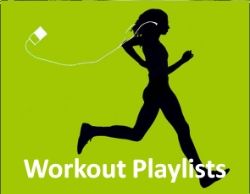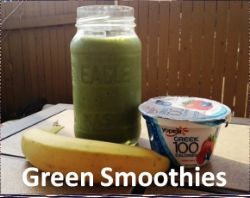Happy Monday!
I hope everyone had a wonderful weekend! Does anyone have any super exciting news to share? I usually try to master a new recipe every weekend, but this weekend was CRAZY! I had a work dinner on Friday, bridal shower on Saturday (for my beautiful friend Kelli), and work meetings ALL day on Sunday. So no fun in the kitchen for me. But oh well. So on to today's topic....
Nutrition labels are everywhere, and they can be your best friend or a big party pooper! Although there is a nutrition label on almost every food item, they can be pretty confusing. What at first glance looks like a healthy choice, could actually turn out to be a calorie, fat, or sodium bomb shell and you didn't even know it. Here are some easy tips from FitSugar.com (and a few of my own) to make reading a nutrition label a little bit easier.
- Always check the serving size first! You need to know the amount of food the nutrition label is talking about. Also, pay close attention to how many servings are in one package. 100 calories might sound good for a serving of potato chips, but not if there are really 3 servings in the bag you just inhaled! Whoops!
- Check out the calories per serving in relation to the serving size. 100 calories for 3 cups of low-fat popcorn looks very different than a 100 calories for a tablespoon of peanut butter. Dang it because I LOVE peanut butter!
- Total Fat: Limit this to 56-78 grams per day.
- Saturated Fat: No more than 16 grams per day.
- Trans Fat: Aim to consume 2 or less grams per day. You have to be careful because many products are labeled "0" grams of trans fat, but actually contain .5 grams! I would consider that lying, but apparently it's legal.
- Cholesterol: Stick to 300mg a day or less.
- Sodium: Aim to consume less than 1,500 mg a day. This includes sodium in your food and the salt you add at the dinner table. It all adds up!
- Total carbs: Look at this number in relation to the list of ingredients. If the number is high but the ingredients include whole wheat and whole grains, you are good to go. On the other hand, if you see ingredients such as sugar or high fructose corn syrup, and this number is high, set the product down and back away slowly (or quickly)!
- Fiber: Women need 25-35 grams a day, and Men need 30-38 grams a day.
- Sugars: Try not to exceed 25 grams of sugar a day. Sugar is definitely one of those less is more things!
- Protein: Women need approximately 46 grams a day, and Men should aim for around 60 grams a day.
- Ingredients: This is one of the most important aspects of the label. Look for real food ingredients (you can pronounce), and avoid enriched flour, hydrogenated oils, artificial flavors and colors, and refined sugars. Also the ingredients are listed in order of the ones that occur the most. For example if the ingredient list looks like the following: whole wheat flour, enriched wheat flour, corn starch, sugar. There is more whole wheat flour than enriched wheat flour.
Food for thought:
What do you look for on a nutrition label?
Yours truly,

share this on » |



















what a great post! i'm totally a label reader, (let's just say food shopping with me always takes some time.) i tend to look for portion size, then calories, fat, protein, and fiber. have to admit, i lack in the other areas :)
ReplyDeletelookin forward to reading more of your blog!
I try to look more at ingredients first and then overall macro breakdown, calories, fiber, etc. I admit that I'm not too mindful of sodium though. I could do better with that.
ReplyDeleteVery helpful post especially since I haven't really paid too much attention to reading labels.Thanks for sharing this!
ReplyDeleteThanks ladies! I am getting better about paying more attention to ingredients. I used to zoom straight in on the calories, fat, and carb stats. I am starting to learn that great ingredients are just as important!
ReplyDeleteThanks for the tips. Usually, most of us don't look at the nutrition labels at the back of the products we buy. We should always check them for us to know what we should and shouldn't take.
ReplyDelete